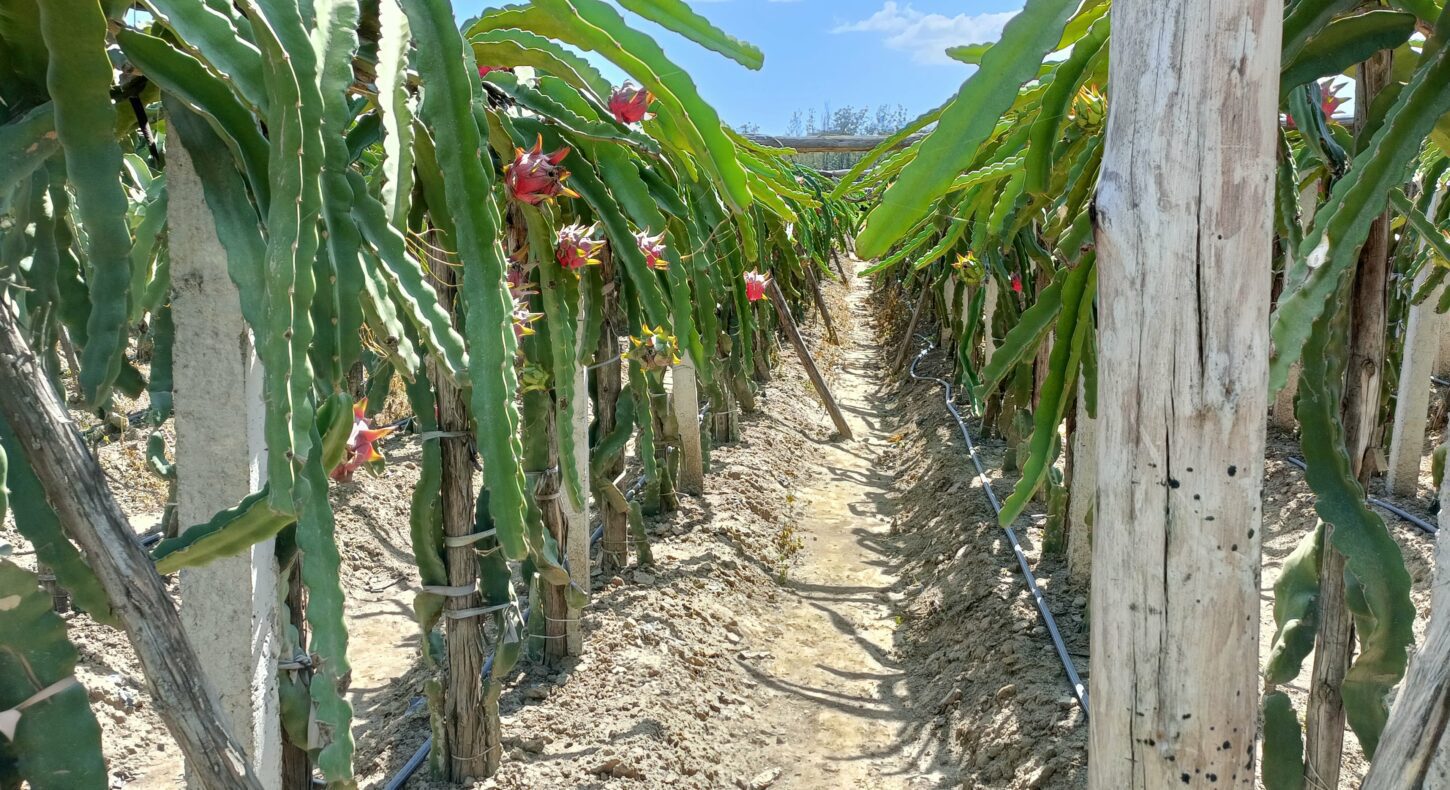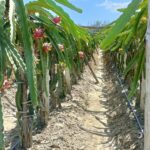In the Article is:
A guide on dragon fruit farming in Kenya, Its benefits, from cuttings to fruits.
Dragon fruit, also known as pitaya, is a tropical fruit that has gained popularity worldwide due to its unique appearance, delicious taste, and numerous health benefits. With its vibrant colors and refreshing flavor, dragon fruit has become a sought-after fruit in many markets. Kenya, with its favorable climate and fertile land, is an ideal location for dragon fruit farming. This article provides a step-by-step guide on how to grow dragon fruit from cuttings or seedlings and highlights the benefits of dragon fruit farming for farmers in Kenya.
Step-by-step guide on how to grow dragon/Pitaya fruit from cuttings
Step 1: Selecting a Suitable Site:
Dragon fruit thrives in warm climates and requires well-drained soil. Choose a site that receives ample sunlight and protection from strong winds. Ensure the soil is fertile, rich in organic matter, and has a pH level between 6 and 7 for optimal growth.
Step 2: Obtaining Dragon Fruit Cuttings/Seedlings:
Dragon fruit can be propagated from cuttings or seedlings. Cuttings are the most common and reliable method. Obtain healthy cuttings from a reputable nursery or a well-established dragon fruit farm. Cuttings should be around 30-50 cm long with at least three nodes. Alternatively, you can grow seedlings from dragon fruit seeds, which can be obtained from mature fruits.
Step 3: Preparing the Planting Holes:
Dig planting holes that are approximately 60 cm wide and 60 cm deep. Space the holes about 3 meters apart to allow sufficient room for the plants to grow and spread. Mix organic compost or well-rotted manure with the excavated soil to improve fertility and drainage.
Step 4: Planting the Cuttings/Seedlings:
If using cuttings, allow them to dry in a shaded area for a few days before planting to promote callus formation. Insert the cuttings or seedlings into the prepared holes, ensuring that at least one node is buried in the soil. Provide support by placing a stake or trellis next to the plant to facilitate upward growth.
Step 5: Watering and Irrigation:
Water the newly planted cuttings/seedlings thoroughly and maintain regular watering until they become established. Dragon fruit plants require regular watering, especially during the dry season, to promote healthy growth and fruit production. However, avoid waterlogging, as it can cause root rot.
Step 6: Providing Support and Training:
As the dragon fruit plant grows, it needs support to climb and spread. Install a trellis or support structure to guide the plant’s growth. Regularly tie the branches to the trellis using soft twine or plant clips to encourage upward growth and prevent damage from strong winds.
Step 7: Fertilization and Pruning:
Apply a balanced fertilizer high in potassium and phosphorus to promote flowering and fruit development. Prune the plants annually to remove any dead or damaged branches and maintain the desired shape and size. Pruning also helps improve air circulation and reduces the risk of diseases.
Step 8: Pest and Disease Control:
Monitor the plants regularly for any signs of pests or diseases such as scale insects, mealybugs, or fungal infections. Use appropriate organic or chemical pest control methods to manage infestations and maintain plant health. Consult with agricultural extension officers or experts for guidance on pest and disease management.
Benefits of Dragon Fruit Farming in Kenya:
- Profitability: Dragon fruit farming can be highly profitable due to the increasing demand for the fruit both domestically and in international markets. It has the potential to provide a sustainable source of income for farmers in Kenya.
- Drought Tolerance: Dragon fruit is well-suited to Kenya’s climate, particularly in arid and semi-arid regions, as it has excellent drought tolerance. It requires less water compared to many other fruit crops, making it an ideal option for water-stressed areas.
- High Market Value: Dragon fruit fetches a premium price in the market, making it an attractive crop for commercial cultivation. The unique appearance and nutritional benefits of dragon fruit make it popular among health-conscious consumers.
- Health Benefits: Dragon fruit is rich in antioxidants, vitamins, and minerals, which contribute to overall well-being and offer potential health benefits. It is known for boosting the immune system, aiding digestion, and promoting heart health.
Kenyans news reported here: lihttps://www.kenyans.co.ke/news/66330-pitaya-nutritious-fruit-making-millions-kenyan-farmersnk
Dragon fruit farming offers an excellent opportunity for farmers in Kenya to diversify their income and take advantage of the fruit’s increasing popularity. By following the step-by-step guide provided in this article, farmers can cultivate dragon fruit successfully and enjoy its numerous benefits, both economically and nutritionally. With proper care and management, dragon fruit farming has the potential to thrive and contribute to the agricultural landscape of Kenya.




